LATEST ISSUE


Musotrees Volume 11.
This special edition, The Muse Issue, gathers stories of inspiration and encouragement from multiple cities in Switzerland, Colombia, India, Malaysia, and the United Kingdom. For the first time, we are releasing a "dual magazine" in a single issue, which we have called Pages of Portugal.
/
Credit Contributors:
Front Cover by Santiago Zapata. Flap Covers by Sanjay Tomar & Francisco Noguiera
Pages of Portugal is a special guide curated in Lisbon, Porto, Melides, and Ericeira. We stayed at the best hotels in these Portuguese cities, explored the finest neighborhoods, and selected our favorite places in Portugal. This issue is the first to focus on country-based content. We have also created a special front flap cover to showcase the best images.
Enjoy our latest issue. Thank you!
Volume Eleven
The Muse Issue &
Pages of Portugal
Special Edition
Magazines 11 products
-
Musotrees Vol. 11 : Special Issue
- Regular price
- $20.00 USD
- Regular price
-
- Sale price
- $20.00 USD
- Unit price
- per
Sold Out- Regular price
- $20.00 USD
- Regular price
-
- Sale price
- $20.00 USD
- Unit price
- per
Sold Out -
Musotrees Vol. 10
- Regular price
- $17.00 USD
- Regular price
-
- Sale price
- $17.00 USD
- Unit price
- per
Sold Out- Regular price
- $17.00 USD
- Regular price
-
- Sale price
- $17.00 USD
- Unit price
- per
Sold Out -
Musotrees Vol. 9
- Regular price
- $17.00 USD
- Regular price
-
- Sale price
- $17.00 USD
- Unit price
- per
Sold Out- Regular price
- $17.00 USD
- Regular price
-
- Sale price
- $17.00 USD
- Unit price
- per
Sold Out -
Musotrees Vol. 8
- Regular price
- $17.00 USD
- Regular price
-
- Sale price
- $17.00 USD
- Unit price
- per
Sold Out- Regular price
- $17.00 USD
- Regular price
-
- Sale price
- $17.00 USD
- Unit price
- per
Sold Out -
Musotrees Vol. 7
- Regular price
- $17.00 USD
- Regular price
-
- Sale price
- $17.00 USD
- Unit price
- per
Sold Out- Regular price
- $17.00 USD
- Regular price
-
- Sale price
- $17.00 USD
- Unit price
- per
Sold Out -
Musotrees Vol. 6
- Regular price
- $17.00 USD
- Regular price
-
- Sale price
- $17.00 USD
- Unit price
- per
Sold Out- Regular price
- $17.00 USD
- Regular price
-
- Sale price
- $17.00 USD
- Unit price
- per
Sold Out
Showing 6 of 11 products on Magazines collection
NEWSROOM
Reportage from Portugal: Art, Design & Wellbeing Weekend at Martinhal Sagres.
From Kuala Lumpur to Algarve, this was my first experience attending the Martinhal Sagres Art, Design, and Wellbeing Weekend—a journey as rewarding as it was inspiring. The nearly twenty-four-hour journey from Kuala Lumpur to the Algarve was long but filled with anticipation. Returning to Lisbon last winter, I felt an undeniable sense of familiarity. The city, once foreign, now feels like a temporary home—a comforting thought that brings its own warmth.
Image Top: The breathtaking view of the Algarve ocean from Martinhal Sagres. Photo by Mariana Mota \ Image Bottom: The work of Bora Design at a glance.


NEWSROOM
Reportage Art Jakarta 2024: Where Local Narratives Meet Global Prestige
Art Jakarta 2024 concluded on October 6 with its most successful edition to date, solidifying its reputation as one of Southeast Asia’s premier art fairs. With over 38,000 visitors, the event saw a significant increase from last year’s 35,000 attendees. Held at JIEXPO Kemayoran in North Jakarta, the fair featured 73 participating galleries, showcasing a diverse range of works from both established and emerging artists. This year’s edition was bolstered by major sponsors such as Julius Bär, UOB, Treasury, and Bibit, highlighting the growing corporate interest in supporting contemporary art.
One of the key reasons behind the fair’s success was its inclusive and diverse selection of galleries. Art Jakarta featured local and international exhibitors, offering a platform for artists from across Southeast Asia. The spacious venue allowed for the presentation of various mediums, from grand sculptures to small but intricately detailed works. It wasn’t just about the numbers; Art Jakarta 2024 also emphasized the importance of quality, offering a curated experience that ensured each artist’s work was given the spotlight it deserved. What stood out this year was the synergy between contemporary art and cultural identity. Many artists used their platforms to explore themes of heritage, nature, and social change. Southeast Asian art, in particular, took center stage, reflecting the region’s unique artistic landscape that draws from deep cultural roots while pushing boundaries in terms of modernity and experimentation.



Immersive Art and Collaborations
The power of collaboration was evident throughout Art Jakarta 2024, especially in projects that brought together different artistic styles and mediums. One of the most talked-about exhibitions was "Mannerist Manifest", a collaboration between renowned Indonesian artists Mulyana and Yudi Sulistyo. Their work, displayed by Galeri Zen1, combined Mulyana’s wool-based art with Sulistyo’s intricate paper creations. "Kapal Tanpa Lautan" was a crowd favorite, depicting a fantastical cruise ship adorned with houses, cranes, and airships. It embodied a blend of realism and whimsy, inviting viewers to immerse themselves in the artists’ imaginative worlds.
*Courtesy Photos Art Jakarta 2024 - (Top Left): Mr. Tom Tandio, the Art Jakarta Director, is giving the opening speech / One of the entrances to Art Jakarta at JIEXPO Kemayoran, North Jakarta / AJ Play by UOB Indonesia.










(Photos Left to Right): 1. Artist Iwan Effendi @ Papermoon Puppet by Mizuma Art Gallery / 2. Artist Nyoman Nuarta by Jagad Gallery / 3. Artist Petrus Pranagung by Jagad Gallery / 4. Artist Cheolyu Kim by Redbase / 5. Artist Joko Avianto by Vice & Virtue / 6. Artist Ilham Karim by Sewu Satu / 7. Artist Rangga Aputra by Dgallerie / 8. From ROH Projects / 9. Artist Irfan Hendrian by Sullivan+Strumpf

Cover Flap Outside

Cover Flap Inside
COVER STORY
A Melancholic Longing for Santorini.
"In these times, when everything is moving so fast and we live in world of constant immediacy, stopping to see, reflect and feel with a photograph is almost a revolution."
Story by Macarena Armario
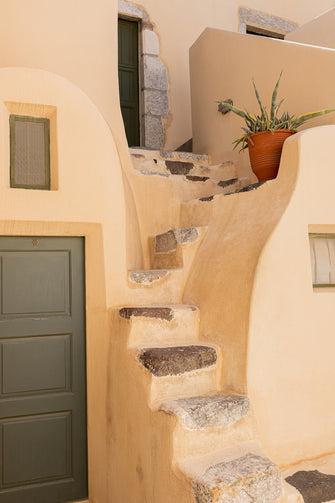

The Romance of Bombay.
"Bombay can be extremely overwhelming; sometimes the feeling is inexplicable and one can find themselves completely lost in its charms easily."
Story by Krish


FEATURE STORY : VOLUME 11
ANDERMATT,
SWITZERLAND🇨🇭


Sunny View of Andermatt (Left: Andermatt Reuss Naetschen, Right: Cablecar Gemsstock) / Credit Photo by Valentin Luthiger & Andermatt.
By Kerol Izwan
Switzerland has always held a special place in my heart. With each visit, I've marvelled at its picturesque beauty and the seemingly idyllic life of its people. Nestled within a landscape that changes with each season, Switzerland boasts stunning natural splendour and the comfort of safety, stability and prosperity, often ranking among the happiest places to live. Recently, I had the opportunity to revisit Switzerland after quite some time. I expected to be greeted once again by its astounding beauty, but little did I know that this trip would provide me with a fresh perspective and unveil new wonders.
My journey began at Zürich Airport, a testament to Swiss ingenuity which blends classic charm with modern efficiency. The airport's design, from its iconic typeface to its subtle colour palette, sets the tone for the traveller’s experience. Despite an exhausting 18-hour journey from Kuala Lumpur, I felt invigorated by the anticipation of what lay ahead. Leaving the country's capital behind, I embarked on a scenic, almost two-hour drive to Andermatt, a charming village in the heart of Switzerland. As we traversed winding roads, the views of the majestic Swiss Alps unfolded before me, each turn revealing a spectacular panorama of snow-capped peaks and quaint villages.
Andermatt, strategically located between Zürich and Milan, has become a hidden gem thanks to the visionary efforts of Egyptian entrepreneur Samih Sawiris. Recognising its untapped potential during his first visit in February 2005, Sawiris transformed Andermatt into a leading Swiss holiday destination. His investments revitalised the local economy, attracting global visitors and turning Andermatt into a sought-after Alpine retreat. Once a quiet hamlet, Andermatt now offers luxury hotels and apartments for residents and seasonal travellers alike. Sawiris' innovative approach to property development has elevated Andermatt into a premier destination, driving economic growth and fostering a vibrant tourism industry.
A pivotal moment in Andermatt was the opening of The Chedi Andermatt in 2013, a five-star deluxe hotel that welcomed its first guests in December. Since then, Andermatt has seen rapid development, including the construction of the Gürschen Flyer and the opening of a golf course in 2015, the expansion of the SkiArena, the inauguration of the Radisson Blu Hotel Reussen, as well as the development of apartment buildings, restaurants and a concert hall.




Winter Season in Andermatt / Credit Photos by Kim Leuenberger & Andermatt.
Nineteen years later, Andermatt has blossomed into a global tourism hotspot, enchanting visitors year-round. During my winter visit, the village transformed into a magical wonderland, with snow-covered peaks casting a spell over the landscape. The Radisson Blu Hotel Reussen, where I stayed, is located near the village square and train station, a perfect blend of comfort and convenience. Energised by black coffee from Biselli, a beloved local restaurant, I undertook an adventure exploring the mountains via gondola. Lunch at Güstch, a Michelin-starred restaurant perched atop a mountain peak, was a highlight of my trip. Designed to harmonise with its natural surroundings, the restaurant offered an indelible gourmet experience, featuring Chef Markus Neff's culinary creations. As I savoured each bite on the sun-drenched patio, I felt deeply grateful for the chance to immerse myself in Andermatt's beauty and hospitality. Every moment reaffirmed Switzerland's place as one of my favourite destinations in the world.
From the Gütsch viewpoint, I observed skiers of all levels gracefully navigating the slopes. From seasoned professionals to beginners, adults to children, everyone seemed adept at skiing. Watching them, I couldn't resist the urge to try the sport. The array of equipment – from ski boots to suits and poles – initially felt cumbersome for a novice like me. However, with time and the patient guidance of my instructors Marcel and Pete, I gradually acclimated to the gear and learnt the basics. After nearly an hour of practice, I was proud to find myself confidently skiing. It was a valuable learning experience indeed. Cheers to a successful ski session!
In Andermatt, the Gotthard region is renowned as a freeriding paradise in winter. According to trade magazines, Gemsstock is among the world's top off-piste areas, offering a variety of spots for skiers of all skill levels. Professionals can enjoy freeride skiing with descents featuring a 1,500m drop in elevation. For beginners like me or those seeking fun, gentler slopes are ideal to try out. However, nothing compares to the breathtaking view of the countless mountain peaks stretching from Ursen Valley to Oberalp Pass and Gotthard Pass. As they say, “Up with the gondola, down in the powder”.
No trip to Switzerland is complete without exploring the mountains by train, so I decided to take the Matterhorn Gotthard Railway. The train's bright red exterior made it look like a snake winding through the snowy mountains at every turn and corner. It was one of my favourite experiences, reigniting my childhood fascination with trains. Taking the panoramic train on the historic railway line via Göschenen was absolutely worth the time. After the train ride, I booked a Mybuxi, an e-hailing service in the village, to visit Cotton Club Andermatt, a lifestyle dining spot promising top-notch menus and premium nightlife, bringing Mediterranean vibes to the mountains.
Social media: @andermatt_swiss_alps/ @andermatt_vision/ #andermattswissalps #andermattvision #andermatt

Gütsch Restaurant by Markus Neff / Credit Photo by Kim Leuenberger & Andermatt.
While the mountains and ski sports are the dominant attractions in Andermatt, its old villages are equally captivating. You can trace the town's history through its charming old houses and the crystal-clear river flowing through the village. Walking through Andermatt feels like stepping onto the set of a romantic film, with cobblestone streets, traditional Swiss architecture and inviting local culture. As I wandered through the village, I stumbled upon alpacas and cows having their morning feed in stables, a beautiful church with a well-landscaped old cemetery, several museums and countless restaurants offering delicacies from classic Swiss fondue to hearty Asian laksa.
The village of Andermatt maintains its humble vibe, where you can take a leisurely stroll to soothe yourself after a tiring day on the slopes. To delve deeper into the village's history, I joined local guide Bänz Simmen for a walking tour. His knowledge and engaging storytelling made the experience unforgettable. He’s quite the local celebrity; everyone we passed greeted him warmly as if he’s the man about town.
Andermatt is undeniably a treasure to Swiss tourism, a noteworthy mountain getaway offering a sense of home-like comfort. The influx of new residential properties over the years has brought remarkable diversity to Andermatt, establishing the village as a destination that stands uniquely on its own for travellers. While Andermatt gained initial fame from James Bond's film “Goldfinger” in 1964, Sawiris' investment has breathed new life and adventure into the village, surpassing the allure of the silver screen.
Social media: @andermatt_swiss_alps/ @andermatt_vision/ #andermattswissalps #andermattvision #andermatt

Beautiful view of Andermatt: Urseren Valley at Night / Credit Photo by Valentin Luthiger & Andermatt.

Read On Print: Volume 11
ShopNEWSLETTER
Arriving in Switzerland, we fell in love with Zurich Airport🇨🇭

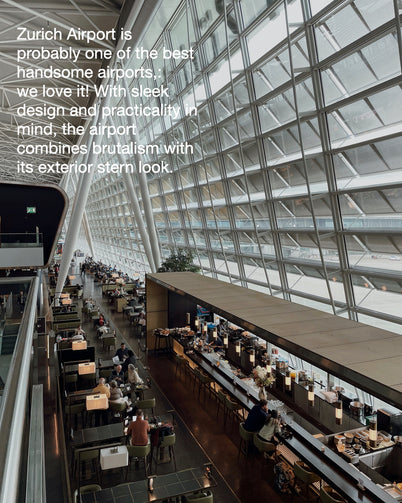
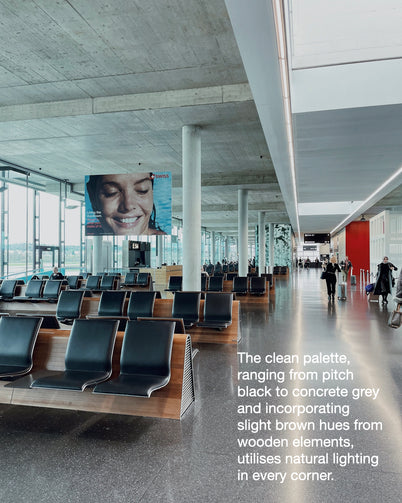

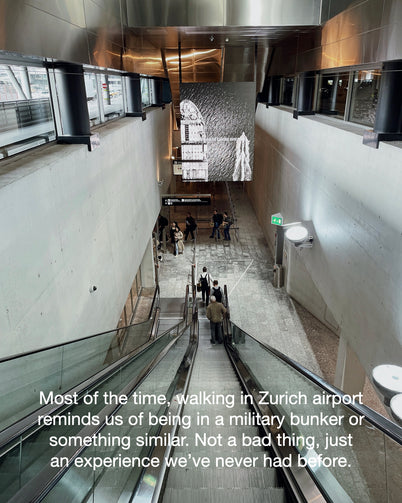

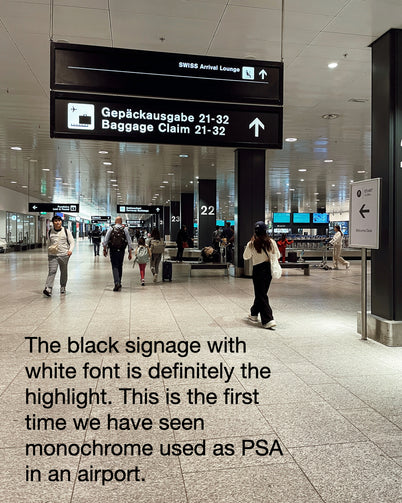

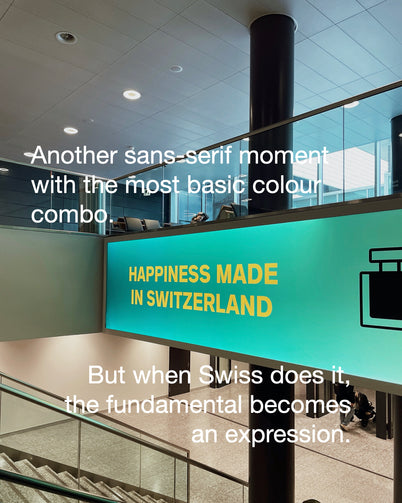

We always believe that photos speak louder. Moving forward, we also believe that every visual must have its story. We love to share our in-the-moment captions, those little epiphanies while we are gallivanting. We focus on the small things that make us happier while we are away. Stay tuned for more little moments from us. We have arrived in Switzerland, and we have a lot more to share.
FRONT COVER VOLUME 10 : SANTORINI, GREECE.
A
MELANCHOLIC
LONGING

FOR SANTORINI.
Story by Macarena Armario
"In these times, when everything is moving so fast and we live in a world of constant immediacy, stopping to see, reflect and feel with a photograph is almost a revolution ."
"All these connections made through the sensations experienced created a symbiotic bond between the person and the place, which lasts forever."
/


Selected Stories

Story Volume 11: Switzerland, Andermatt by Kerol Izwan.

Newsletter: Zurich Airport Edition.

Story Volume 10: Sal's Estate Langkawi Island.

Story Volume 10: Hemja Camp, Pokhara by Rayna Carruthers.

Story Volume 8: Lockdown in Paris by Thibault Charpentier.

Story Volume 7: Nusantara Flavours by Denise Hung.

Story Volume 6: Assalamualaikum Jordan by Suleyman Azhari.

Story Volume 5: Cairo: A Pilgrimage of Embracing Change In The Desert by Manon.
STORY VOLUME 10 : POKHARA, NEPAL
Hemja Camp Pokhara:
Photos & Words by Rayna Carruthers
A Legacy At A Crossroads
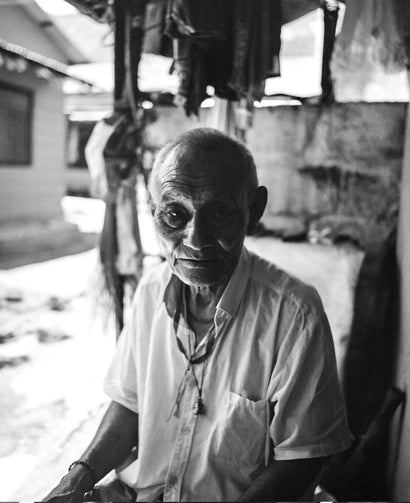

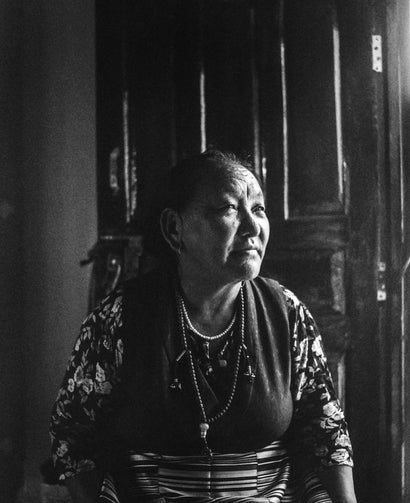
From left to right: Portraits of Norchung, Tsering and Tadon.
From the day Norchung was born, he was destined to be a monk. Traditionally, every firstborn son in Tibet was to be dedicated to furthering Buddhism. In 1959, at 23 years of age, Norchung was forced to flee his monastery in Tibet to Mustang, India. Five years later, he went in search of his family, hearing that they had escaped to Nepal. On the way to Pokhara, through the harsh mountainous landscape and changes in altitude, he was reunited with his niece, Tsering, who had escaped traffickers at just six years old. It was a miracle.
When they made it to Pokhara together, they were reunited with their family. They settled with the others in an unwanted area of the forest, where ghosts were believed to reside, beside a river where locals cremated the dead. There was no infrastructure. Most people had lost all their cattle in the chaos of leaving Tibet and had sold all their valuable belongings in order to reach Pokhara. They received aid from the World Health Organisation. Norchung worked any job he could find. He worked as a porter for road builders in the region, as well as carrying tourists’ heavy equipment across the Himalayan mountain ranges. Later in life, he made rugs and souvenirs to sell to tourists. He held on to his spiritual calling; he never married.
He told me his story as we sat outside of his humble home, built many years ago from mud. The first houses in the camp had been built from bamboo, then mud and now all around us, concrete houses were being built in anticipation of a cruel winter.
Norchung’s niece Tsering, now 67 years old, lived just a few steps away in a house she shared with her sister Tadon, who was a few years younger, as well as her two daughters. I barely recognised it as since the last time I visited four years ago, they had demolished their old mud home and rebuilt it with concrete. The new home was expected to last a hundred years, maybe even more.
The two women showed me around their new home. Portraits of the Dalai Lama adorned their walls. They don’t remember Tibet, but they had stories from Norchung and their parents. The rugs they had woven in the camp’s factory were lying on each bed, perfect for sleeping on. They took me to the factory where Tsering still worked, making tea and weaving rugs in her spare time.
As tourists started coming to Nepal in the 1960s and the Tibetan cause gained popularity, foreigners visited the camp and spent their money here. The Tibetan community invested this into the factory and began selling rugs. This was the camp's main source of income which they channelled into the development of a temple, a school and a community hall. It rooted them in Nepal, their new home. It gave them opportunities to send their children to schools in Kathmandu and to train to become a nurse or a teacher, like Tsering and Tadon’s daughters.
But things had changed significantly since those years and while tourists still appreciate this community and fell in love with their artisanship, it was no longer a steady source of income. In the camp’s early days, the community lived and worked in the factory; babies were even born there. Now it was mostly locked up, used occasionally to weave a rug or two, with broken equipment and forgotten items abandoned.
When Covid-19 measures came into full effect worldwide, the stream of tourists stopped entirely, plugging out the community’s lifeline. While they had savings as a camp and were being supported by the Tibetan diaspora government, they struggled once again to sustain themselves. Unable to work and forced to stay inside except for limited times each day, they were reminded of the camp's beginnings, of how little they had, with no clothes, no books, when they had to rely upon their community, upon aid, and upon the kindness of strangers.



“Standard of living is the main goal,” Tsering’s daughter whispered to me as we ate lunch together in their home and she told me about her plans for the future. Many of the women her age from the camp, with whom she had grown up, married foreigners and moved abroad. It was something she was hoping for herself, too. Despite being born in Nepal, she has no citizenship; all she has is a birth certificate.
This is a shared story for many of her generation in the camp. Even though she was trained as a teacher, she would never be able to work in a Nepali school. Her goals for the future were pragmatic and logical, at the expense of the hope of finding love or happiness, or being able to preserve her culture. She would give all that up for a safe and stable life far away from the memories of her childhood and the experience of her parents.
Tsering’s daughter invited me to join them for a celebration the following day. I sat among the crowd in the community hall, facing the monks on the stage. Nearly every person in the room was holding on to their prayer beads and repeating words under their breath as officials gave out bottled water in the sweltering heat. It was a Buddhist prayer festival called “Guru Puja” and the community were praying for the blessing of all living things.
Tibetans from communities all around Pokhara had come to participate in the day’s festivities. Later, Tsering’s daughter showed me around the camp – the shops where they sold souvenirs, a clinic, a care home and a butcher shop. As I looked around, it was hard to imagine that they had started with nothing only 60 years ago. A tree stood as a mark of the forest which had been there before.
Many years after the Tibetan cause gained global attention and their camp relied on the help of their leaders, the international community and the business of tourism, their community is at a crossroads once again. Slipping through the cracks, the younger generation’s inability to secure a good future for themselves in Nepal means that despite all their hard work and ingenuity, there may be no option but to leave once again.
As I left the camp, I could not help but wonder how it would change in the years to come. It had already changed so much in Norchung’s lifetime. Who would be left? Would they still weave rugs and celebrate festivals in the community hall together? It would be a great victory if they did. But it would require something external to change. For more political stability, a chance to work and provide for their community again. How I hope their legacy can remain.


INTERVIEW VOLUME 10 : BALI & SYDNEY
A Conversation with Nicholas Vodicka, Co-Founder Softer Volumes.
Interview by Kerol Izwan
I remember meeting Nicholas at a cafe nearby his office, located in a docile neighbourhood not far from Sydney. After a laid-back conversation, he gave me a tour of his office, where we continued talking about his design preferences and aesthetics. At that time, Nicholas was running a magazine called Hey Gents, a handsome guide magazine for gentlemen. We stayed connected after that and kept tabs of each others’ work. After producing six issues of Hey Gents, Nicholas decided to put a pause on that and moved on to Softer Volumes, a hardcover book packed with guides and stunning photos. I was eager to learn about this transition process in detail.
On Instagram, he is constantly seen gallivanting from Sydney to Porto, Bali to Kuala Lumpur, as well as exploring every nook and cranny of Italian streets, sharing handsome photos of his journey. A dream job!
In the interview, Nicholas shared the virtue of mixing business with pleasure, the challenges of sharing his work with the rest of the world, as well as living a dream life in Bali.




1. Hello Nick, how have you been? It has been a while since the last time we met in Sydney. I’m excited you agreed to be part of this issue. Please share with our readers a bit about yourself.
Hi Kerol. I’m very well, thank you. Yes, that coffee meeting we had below our old office feels like ages ago now – I probably would have picked a nicer café if I knew it would be mentioned in an interview years later!
I’m from Sydney and co-founded a publication called Softer Volumes with my business partner, Joe Vuong. I’m mainly responsible for the creative direction and managing the content team, along with various graphic design and photography work. This year, I’ve been working remotely. I spent three months in Portugal at the start of the year and have now been in Bali for about five months.
2. You ran the men’s style magazine Hey Gents last time (I loved your work!). What made you decide to halt the production of Hey Gents and launch a new publication? What was the spark?
The move from Hey Gents to Softer Volumes was actually more like a natural evolution of the publication than a decision to stop one and start another. Hey Gents began as a men’s style blog, and over the years, we introduced new categories such as interior design, architecture, travel, etc. As our content topics broadened, our readership grew closer to a balance of men and women. After extensive consideration, we decided the publication’s name should embrace our entire audience, rather than only partly. That was the main motivation – to better represent the community we had built.

I asked, "Here's the million-dollar question: Why the name Softer Volumes? Enlighten us."
INTERVIEW VOLUME 10 : SÃO PAULO, BRAZIL.
Raphael Dias & Raffaele Asselta
A Conversation with Casa Diaria's Brazilian Duo.
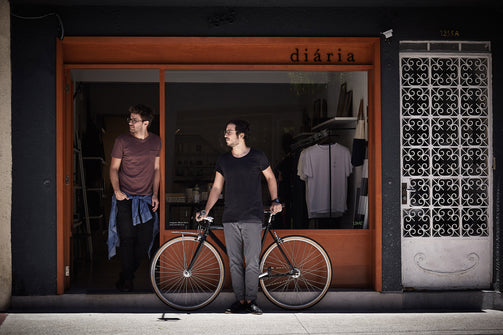

Interview By Kerol Izwan
I was genuinely interested in Casa Diaria growth, especially how they pivoted during the pandemic. Raphael and Raffaele have created sublime tapestries and various artworks, which are now exhibited at the store. On top of that, this dynamic duo have branched out into diverse things, including curating a gallery of their own creations and organising soulful events to connect with creatives in the city.
STORY VOLUME 9 : BOGOTA, COLOMBIA.
Snapshots of Serendipity.
My venture into photography, which took a serious turn during the pandemic, yields interesting perspectives.



Selected Interviews





Created in Malaysia with lenses

from all over the world.
We are always looking for like-minded people to share their stories in our magazine. If you share the same passion, please contact us to discuss potential collaborations. We look forward to hearing from you.
Musotrees Magazine is published and distributed by Edoertorial Office.
Under the Ownership of Second Attempt Studio 202203234370 (RA0091919-U)
- Choosing a selection results in a full page refresh.
- Press the space key then arrow keys to make a selection.



























